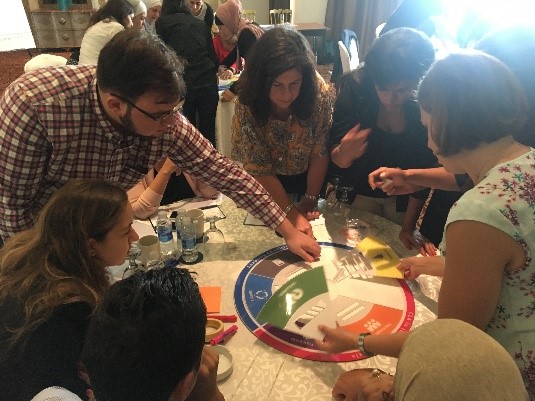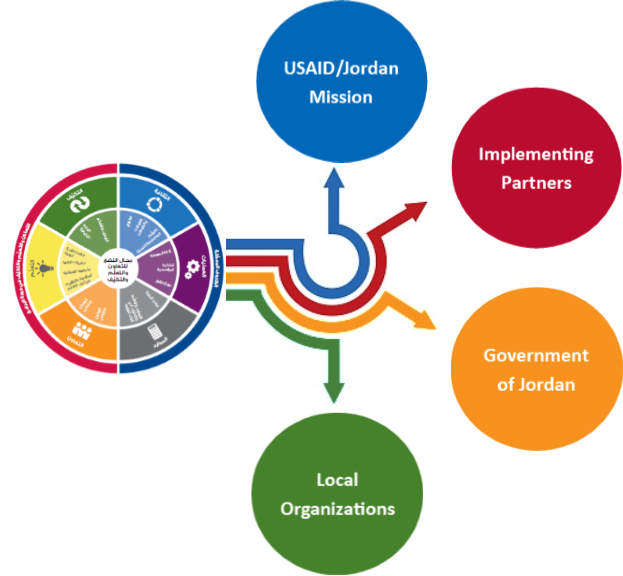Expanding the Reach of CLA Through Wide Stakeholder Engagement

The USAID Collaborating, Learning, and Adapting (CLA) Framework and Maturity Tool provides an engaging participatory approach to assist missions in being more intentional about implementing CLA practices. While the CLA Framework and Maturity tool are primarily designed to help USAID Missions plan and implement CLA approaches, the key steps in the implementation of the Maturity tool, including self-assessment, establishing a vision, developing an action plan and tracking progress, are also relevant for a wider set of stakeholders. This provides a great opportunity to extend and apply CLA more broadly in the development arena.
This is particularly relevant as USAID Missions collaborate at multiple levels. Engaging the CLA framework to enhance CLA integration across a broader array of stakeholders has clear advantages. By leveraging stakeholder knowledge, it allows for better coordination and more effective division of labor, an improved understanding of the context and how it may be evolving, as well as the ability to identify key opportunities for adaptive management. Applying the CLA framework among a broader community of stakeholders, however, requires the buy-in of the various stakeholders, and a shared understanding of the framework and how it may support the achievement of their development objectives. Furthering this understanding, in turn, requires making the framework and its key aspects more accessible to a broader audience.
Enhancing CLA Awareness and Utilization in Jordan

Building on a training provided by the USAID Bureau for Policy, Planning, and Learning and LEARN contract teams in 2017, USAID/Jordan’s Monitoring and Evaluation Support Project (MESP) embarked on a multi-staged approach to enhance CLA awareness across a wide array of stakeholders. Primarily, this involved creating an interactive, tailored workshop, introducing a wide range of stakeholders to the concept of CLA, the Maturity Tool, and the Self-Assessment Process. In a further effort to expand awareness and strengthen the utilization of CLA across Jordan, MESP released the first ever Arabic translation of the CLA Maturity Tool.
Not only did MESP strengthen awareness among USAID staff and implementing partners, but also expanded awareness and potential utilization of CLA to a wide range of local stakeholders, including the Government of Jordan and important local civil society organizations. As the introduction of CLA to local stakeholders was a new approach, MESP further tailored the CLA workshop to contextualize CLA for both USAID and non-USAID stakeholders and ensure CLA was accessible to this broader audience. In total, MESP strengthened CLA awareness and interest in utilizing CLA among 68 individuals from 35 organizations (15 implementing partners, 6 local organizations, and 14 Government of Jordan or semi-governmental institutions) across two workshops held on September 17 and October 22, 2018. Government Ministries supported included a range of key Ministries partnering with USAID to ensure sustainability of USAID-funded development initiatives. Key Ministries include: Ministry of Planning and International Cooperation, Ministry of Health, Ministry of Municipal Affairs, Ministry of Social Development, and Ministry of Water and Irrigation, among others.

As a result of the workshops, over a third of participant organizations expressed interest in MESP providing further support on CLA, including facilitation of the CLA Self-Assessment process to strengthen CLA practices. To follow-up and strengthen this demand for CLA, MESP is exploring options to co-facilitate the self-assessment process and/or provide technical assistance as needed with interested institutions and organizations. Ultimately, as CLA awareness and utilization increases, so too is the enabling environment strengthened for achieving USAID’s Development Objectives.



